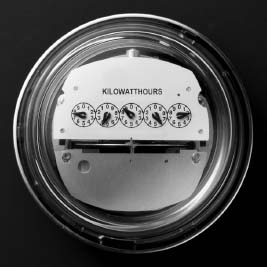Everyday MathNumbers and Math in Everyday Life |
What do the numbers on gas and electric meters measure? |
Gas and electric meters measure the daily gas or power usage, usually of a house or other building. The standard electric meters are clocklike devices that record the amount of usage. As a house or business draws on the electric current, a set of small gears inside the meter move. The number of revolutions are recorded by dials in the meter, with the speed of revolutions determined by the amount of power consumed. Newer digital models record power usage digitally.
A gas meter measures the amount of gas used by a home or business. In this case, the meter measures the force of the moving gas in the pipeline. The dials on the meter turn faster as the flow of gas increases, or slower as the gas flow decreases. To understand how the gas and electric companies charge a customer takes only an understanding of simple mathematics. In both cases, the difference between one month’s reading and the next month’s reading is the amount charged. For example, if the electric current reading is 3240 and the previous month’s reading is 3201, the amount of electricity used is 39 kilowatts for one month. Then the company multiplies the number of kilowatts by the amount per kilowatt hour to arrive at the charge to the customer.

Electric meters like this one measure daily power usage.
